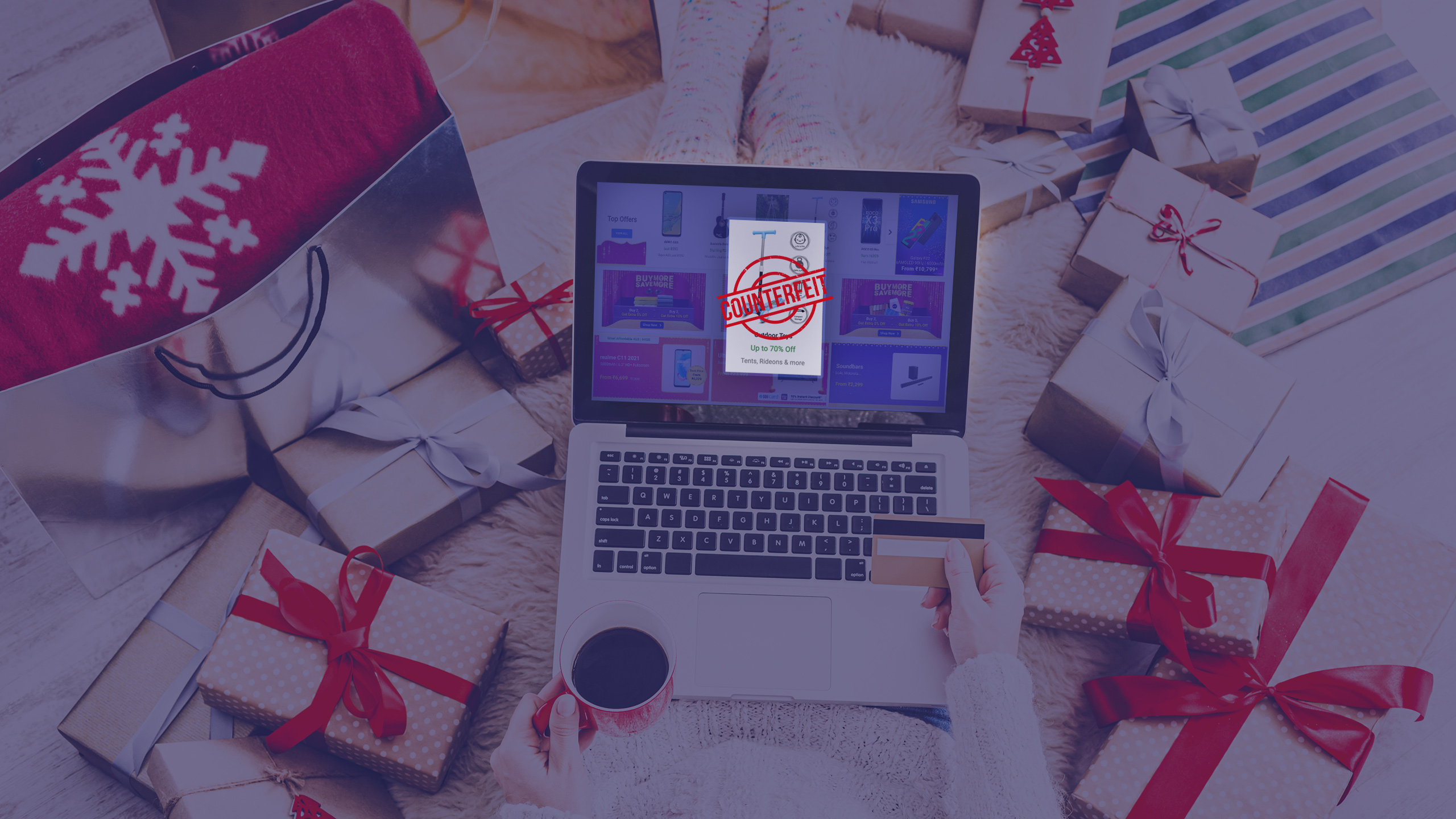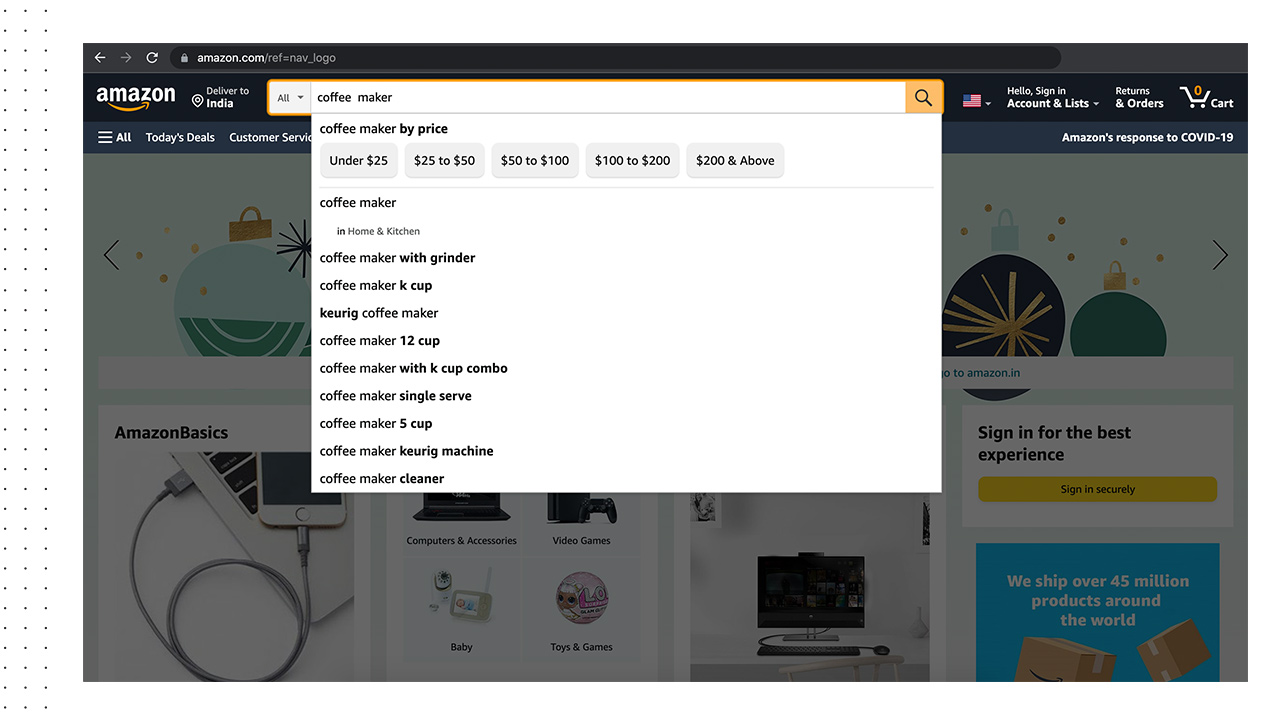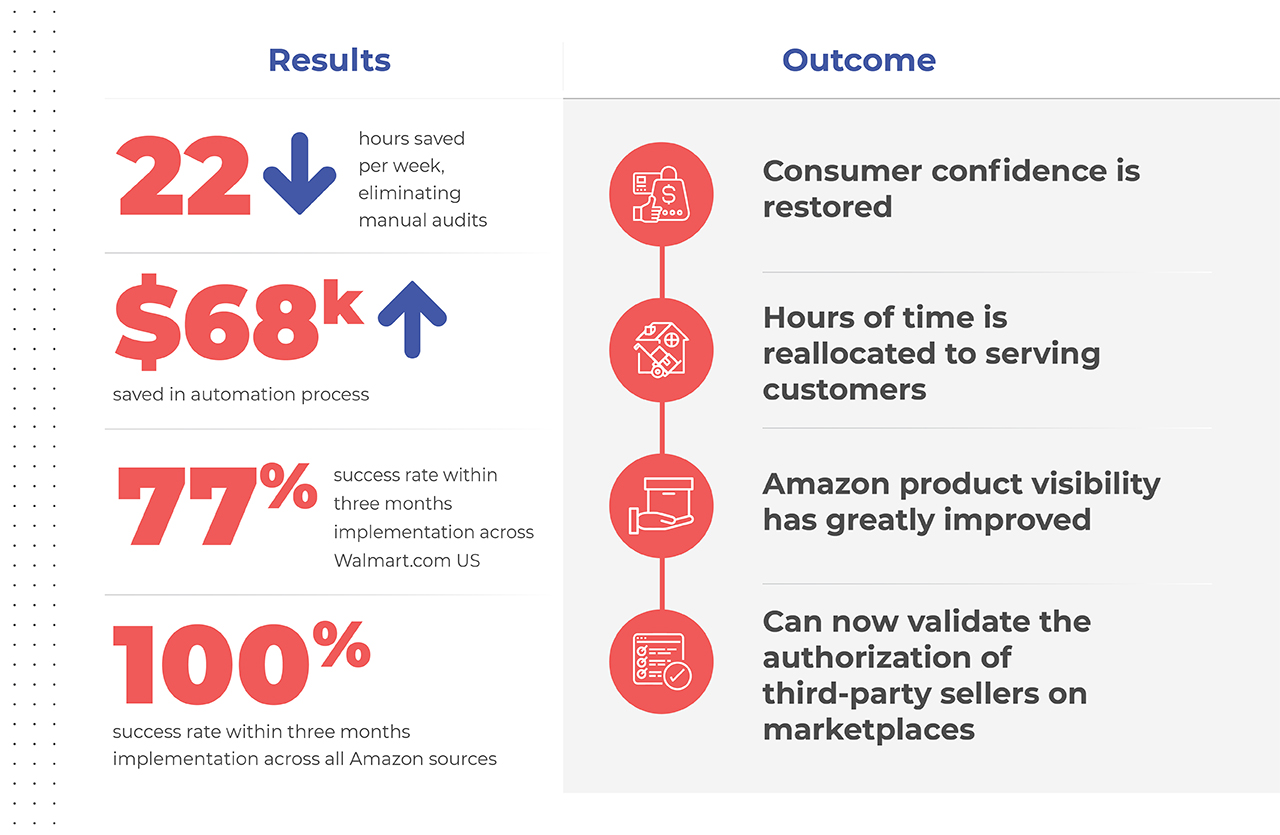Counterfeits pose a dangerous threat to any retail brand. Since every single sale is a pivotal branding opportunity, especially for young, burgeoning eCommerce brands, an online marketplace flooded with counterfeits can be particularly dangerous. One in five customers will boycott a brand after mistakenly purchasing a counterfeit product, and that’s not the kind of ratio that any retailer –– from the smallest Direct-to-Consumer (DTC) site to the behemoths like Amazon –– can afford to ignore.
In the age of online reviews, it’s especially dangerous to have counterfeits floating around. Customers that have a bad experience with a counterfeit can take to the internet to disparage your brand without ever actually interacting with your company or trying your product. That’s why consistent and thorough content audits are paramount to ensuring your brand’s authentic products are highly discoverable, and brand protection and governance processes are in place to safeguard brand integrity across all applicable eCommerce websites.
The Holiday Counterfeit Boom

The holidays are a time when customers search for gifts for their friends and family, which means exploring brands outside of their usual fare. Many consumers will be exposed to your brand’s Digital Shelf for the first time over the holiday season, creating an opportunity for brand growth. But if you don’t have eCommerce brand protection initiatives in place, the holidays can be detrimental to brand positioning, customer trust, and your bottom line.
As consumers boost their online spending and web traffic increases over the holidays, so does the likelihood of them purchasing counterfeit goods online. eMarketer predicts that retail eCommerce sales will comprise almost 20 percent of total holiday retail sales this year. As such, there will also be a surge in counterfeit inventory. So, this is an ideal time to invest in a brand protection solution to help you stay ahead of unauthorized sellers entering the marketplace.
Brand Integrity Helps Suppliers Save
Implementing a solution to mitigate the risks of counterfeit products should be at the top of every retailer’s “To-Do” list this year. However, for many retailers, this means manually reviewing numerous websites and third-party marketplaces for violations. Not only is manually reviewing content, images, and seller authenticity a time-consuming process, but it also leaves a lot of room for human error – making it possible for counterfeits to slip through the cracks and into the hands of unsuspecting customers. Not to mention your time should be spent fulfilling orders and increasing customer satisfaction during the high-traffic holiday season, not distracted by monitoring counterfeits.
Fortunately, that’s not the only way to identify counterfeits and protect your brand online. An effective content auditing tool can help you monitor, detect, and determine systems to identify and act on identified violations, saving time and labor hours normally spent on manual auditing processes. Content audit software also often contains helpful features to help you run your business more strategically by monitoring online hygiene factors like product titles and description. It works across all online channels by highlighting content gaps, which can then be remedied to improve product visibility and conversions. Through online content optimization, you can save money (in unnecessary labor costs), improve your Share of Search, and increase sales and share, with a modest up-front investment.

Brand Value Protection Boosts Consumer Confidence
Brand image protection doesn’t just protect retailers, it also protects customers from unintentionally buying dangerous counterfeit goods. Counterfeiting has skyrocketed during the pandemic. The International Chamber of Commerce reports that, by 2022, counterfeit goods will be a $4.2 trillion industry, and global damage from counterfeit goods is projected to exceed $323 billion. Studies show one in four customers has unknowingly purchased a counterfeit item online.
As counterfeits increase in number, so does the risk of counterfeit consumption by unwitting consumers. Counterfeit goods are as dangerous as they are ubiquitous. Customs and Border Patrol has found ingredients such as cadmium, arsenic, lead, and cyanide inside of counterfeit cosmetics. Consumers are aware of these risks. So, as a retailer, you need to be able to reassure customers that they can trust the authenticity of the goods they are purchasing at your online store.
A counterfeit detection tool can help you identify fakes and image replicas across multiple online marketplaces, so you can get fake products delisted. Automated counterfeit solutions can increase customer satisfaction in their purchasing experience, since they know they’re getting an authentic product right off the bat. This type of online brand protection creates increased brand loyalty over time, as well as more positive first-time product interactions.
Making a Measurable Impact: A Counterfeit Detection Case Study
Classic Accessories is a leading manufacturer of high-quality furnishings and accessories. The company’s investment in a counterfeit detection tool paid off in spades for their organization. After noticing a surge in counterfeit versions of their goods being sold via online, global marketplaces, they decided they needed to change their manual counterfeit and image violation detection process to an automated one to proactively respond to concerned activity in a timely manner.
Their goal was to achieve streamlined, actionable insights across all retail websites to account for varied violation submission processes, and to reduce the timespan in which insights were generated, ultimately eliminating the need to conduct daily, manual audits. They partnered with DataWeave, who built out a fully customized program to automate Classic Accessories’ content inventory management process, and identified SKU-level violations by matching names and images in diverse online marketplaces.
During the first three months of onboarding, Classic Accessories was able to detect more than 25,000 violations, submitting notices to each marketplace, and even achieved a 100% removal rate across all Amazon sources. Additionally, they also achieved their goal of saving time (22 hours per week) in automation processes, translating to a $68,000 savings opportunity in labor costs.

Closing Thoughts
Prioritizing your online brand protection strategy is imperative to growing your online presence and achieving customer satisfaction and brand loyalty. Fortunately, there are options like DataWeave’s brand protection tool available to help curate your online content, provide consistency across online channels, and improve consumer confidence by addressing and removing counterfeit violations. Implementing the right solution can help find counterfeit products in real-time to keep your brand safe –– and your reputation intact –– throughout the 2021 holiday season. The right brand protection software will provide both Brand Protection and Content Audits, so your brand is optimized from every possible angle for truly competitive results.
